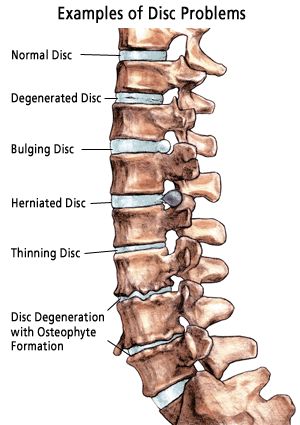Low Back Pain. Over 90% of humans will have it some day. We may eat Paleo but have not gotten away from the curse of walking upright. The pain can either be a minor soreness or the sign of something worse to come. Crossfitters often have some kind of tweak or soreness and the back is a very common site for a lot of things to go wrong if we are not careful.
 What can cause Low Back Pain. DT. Kidding but it can be an issue. The workout DT has dead lifts, hang power cleans, and push jerks. For anyone with LBP, DT can place a severe strain on the lumbar spine if you are not careful. The start of the deadlift position for people with LBP will provide flashbacks to tweaks or aches in their past. As with any injury and as with DT, you don’t want to push through pain and listen to your body. As I tell people there is the pain of wind being sucked from your body which is OK and part of this whole phenomenon that we love somuch. But then there is the pain of muscle, bone or nerve which we have to respect.
What can cause Low Back Pain. DT. Kidding but it can be an issue. The workout DT has dead lifts, hang power cleans, and push jerks. For anyone with LBP, DT can place a severe strain on the lumbar spine if you are not careful. The start of the deadlift position for people with LBP will provide flashbacks to tweaks or aches in their past. As with any injury and as with DT, you don’t want to push through pain and listen to your body. As I tell people there is the pain of wind being sucked from your body which is OK and part of this whole phenomenon that we love somuch. But then there is the pain of muscle, bone or nerve which we have to respect.
The most common cause of Low Back Pain (LBP) is muscular in nature. There are a multitude of muscles in the lumbar spine and glutes that can be strained or have small tears in them after pulling or pushing. This can set off spasms, pain, tightness and stiffness. If it stays directly in the low back then the nerves are probably not involved.
 If you start having radiation of the pain in to the thigh, calves or toes, with weakness or numbness then the nerve may be getting irritated from a disc bulging out and chemically irritating the nerve or putting mechanical pressure on it. If this is a chronic situation and there is stiffness in the morning that loosens up as the day progresses, then arthritis can be called into question. Other reasons for LBP include stress fracture, infection, tumor all rare.
If you start having radiation of the pain in to the thigh, calves or toes, with weakness or numbness then the nerve may be getting irritated from a disc bulging out and chemically irritating the nerve or putting mechanical pressure on it. If this is a chronic situation and there is stiffness in the morning that loosens up as the day progresses, then arthritis can be called into question. Other reasons for LBP include stress fracture, infection, tumor all rare.
Typically LBP acutely will get better on its own and most cases will disappear within 1 week to 4 weeks. Professionals are there to help including physical therapists, chiropractors, and massage therapists. Initially there is usually no need to image things. If things don’t get better the there are xrays, MRIs to look for nerve or disc involvement, but often times that can be picked up with a good physical exam. Initial treatment is aimed at decreasing pain and preventing stiffness from immobility. As pain subsides being patient and not doing Fran on the third day of treatment is a good idea. Surgery is reserved for severe neurologic compromise or unrelenting pain with a disc herniation.
Prevention is aimed at keeping muscles around lumbar spine and pelvis flexible and strong. Stretching of the hamstrings, abductors and rotators of the hips are very important. Abdominal strength is also very important to act as a rigid anterior or front structure and take the pressure of the posterior structures in the low back, muscles, joints, and discs.
*Article taken from 321gomd.com

No comments:
Post a Comment